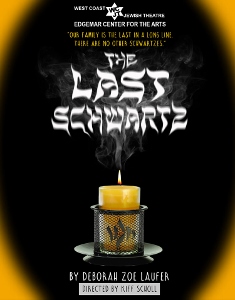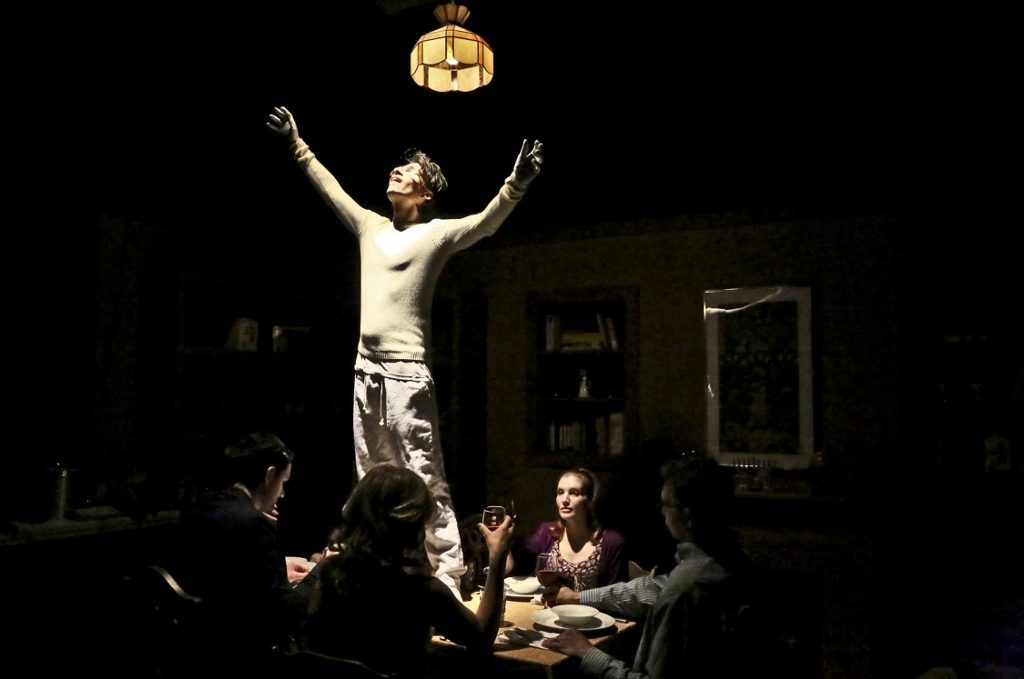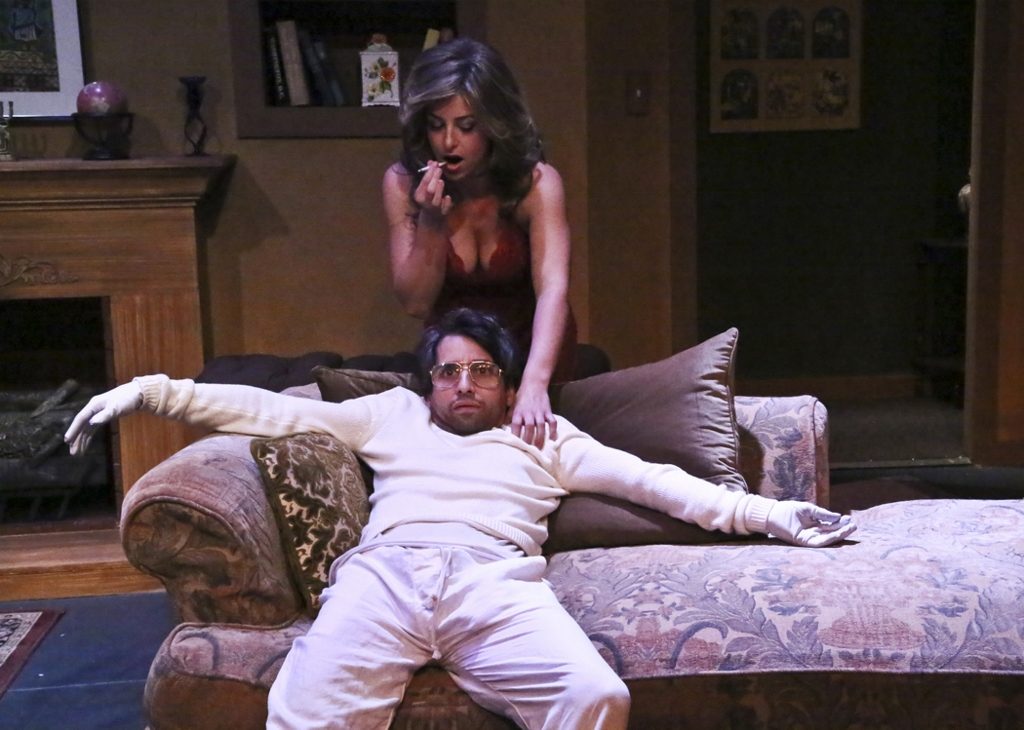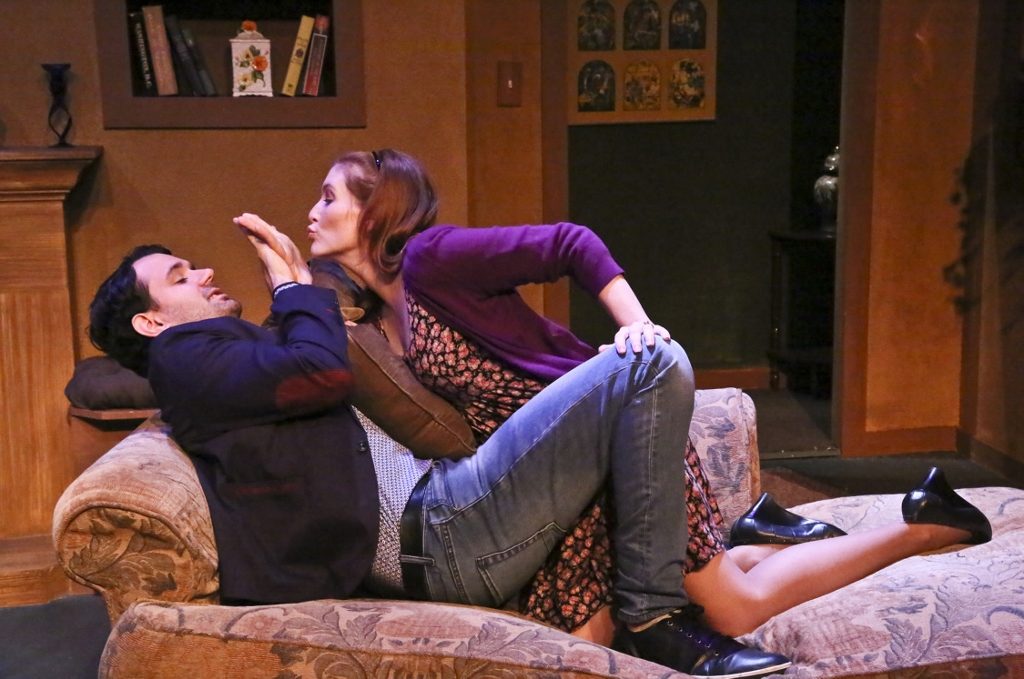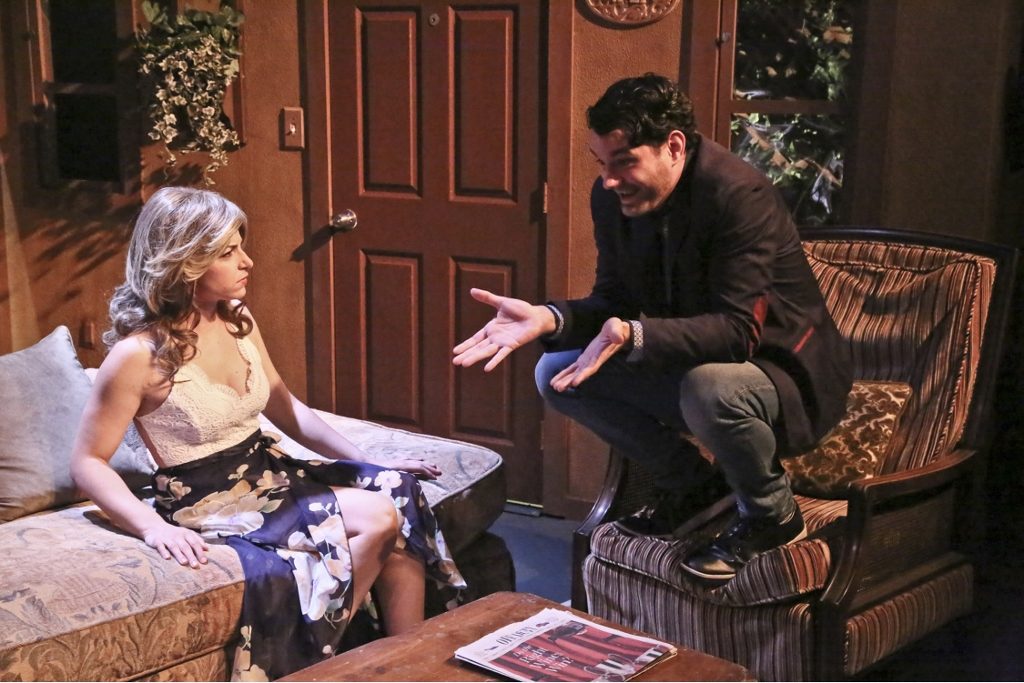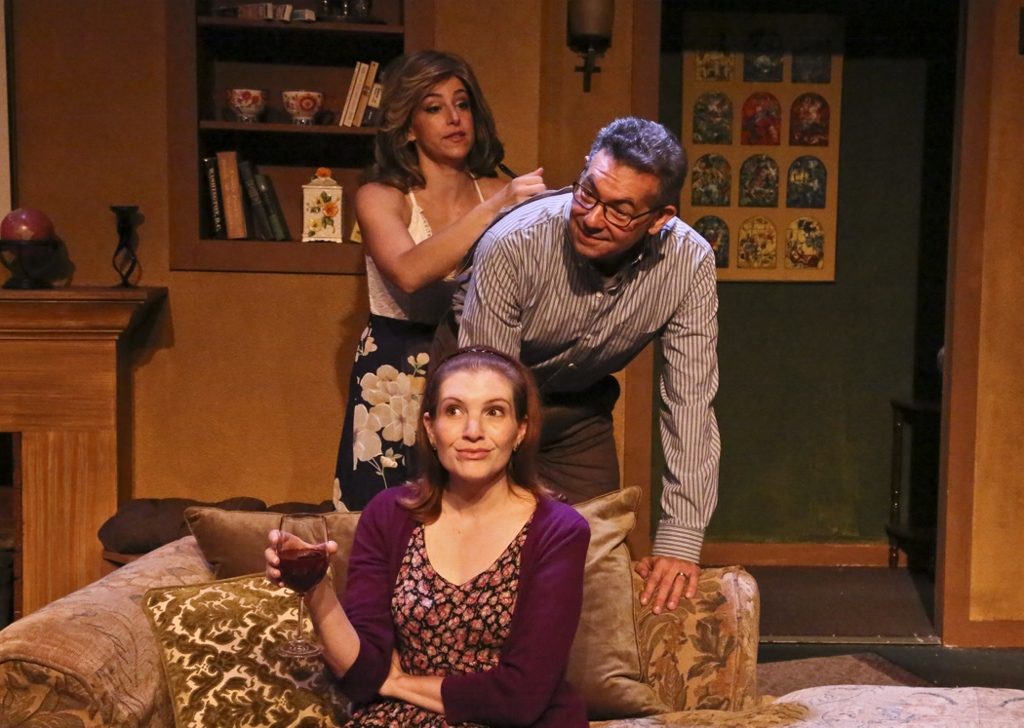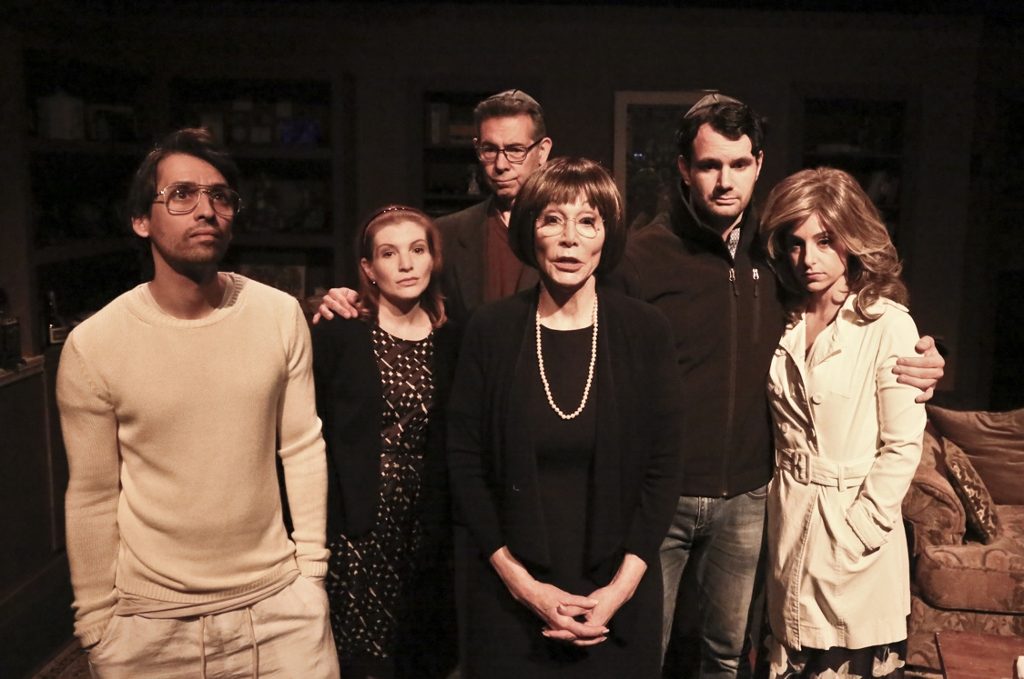BUT IS IT GOOD FOR THE JEWS?
I love Anthony Trollope’s The Way We Live Now. It feels a bit highfalutin putting it that way, as if I sit around reading Victorian classics when not appreciating the high art of “theatre” (not “theater”). My first experience with it was not the book but the 2001 miniseries starring Hercule Poirot — I mean, David Suchet. I did read the book soon after, and I highly recommend both. The main character is a patriarchal Jewish tyrant around whom Trollope creates an intersection of class, desire, greed, technology, love, insanity, and culture. The story and its title crystallize a way of looking at our world and at representations of modernity clashing with the traditions within it.
Deborah Zoe Laufer’s play The Last Schwartz, presented by the West Coast Jewish Theatre at the Edgemar Center for the Arts in Santa Monica, is set in the present, and concerns the one-year anniversary of a patriarchal Jewish tyrant’s death. Perhaps it is the random coincidence of the Jewish patriarchal connection (the men are completely different otherwise) that sparked thoughts of Trollope, but as the play opened on the somewhat familiar scene of a Jewish family coming together for dinner, I wondered what this play might have to say about the way we live now.
The first scene begins with a wonderful, endearing, surprising monologue from Bonnie (Samantha Klein). To the annoyance and/or indifference of the others on-stage, she entertainingly natters on about an appearance on the Oprah Winfrey Show of a pair of twin sisters conjoined at their heads. Bonnie’s chirpy appreciation for the twins’ pluck turns dark and comically nasty when she recounts Ms. Winfrey’s and the audience’s approving response to the sisters announcing their dreams of having children. Bonnie grows furious. She would be a much better mother than these two “freaks,” if only she could have a child.
We learn it is the night before the unveiling of the patriarch’s headstone — a year since his death — as is the Jewish custom. Bonnie is married to Herb (Warren Davis), one of the four Schwartz siblings. Eldest sister Norma (Cheryl David) is bossy and grasping, middle brother Gene (Mike Bash) is a successful commercial and video director. He unexpectedly brings Kia (Natalie Pollison), the “Fat No More Girl” in one of his commercials who also hopes to be the “Girl in a Cage” in his upcoming music video. Youngest sibling Simon (David Amito), an apparently successful astronomer, is possibly autistic and suffers from an oversensitivity to physical sensations. His siblings largely ignore his disabilities as well as his apocalyptic warnings, and they are seemingly unaware that he is going blind.
Samantha Klein is excellent as Bonnie (the role is played at other performances by Rainbow Underhill), and Laufer has written a great beginning that orients us immediately. Bonnie is a compelling character, we know what her main issue is, and doing some math, we infer that “The Present” is probably earlier than now, maybe sometime in the 1990s. (Oprah went off the air in 2011, but the episode itself, and its memorable, very real twins, Abby and Brittany Hensel, first aired much earlier. I guessed the mid-‘90s, and looked it up: 1996. The sisters went on to star in their own show on TLC in 2012.)
But wait a minute. Maybe it is not the mid-1990s. Kia has a smart phone. So, is it actually “now” now? It can’t be. Her flowy halter-top, sheer long skirt, and frosted wig place her more in the ‘70s. No modern woman would wear that wig, certainly not this character, and what’s with her beige patent-leather open-toed pumps? As other characters make references to various events, mores, and emotional moments, it becomes murkier. The playwright apparently means for this to be the present, yet the characters do not have a shared cultural timeline. This is not the way we live now.
The trouble goes beyond a costume possibly being a misleading, retro touch rather than an indication of time and place, or a character possibly not mentioning a television episode being a decades-old rerun. The emotional life of the Schwartz family struggles to find coherence amidst histories, memories, economic classes, costumes, and props and furniture that don’t match.
Co-set designers, Jeff Rack and Amanda Sauter give us a crowded, down-market stage that suggests an old Brooklyn or Bronx apartment, yet we learn we are in upstate New York, in a “country house”; Costumes (uncredited) suggest Herb and Bonnie are decidedly middle-class, yet they turn out to have the means to procure an extra Manhattan apartment, complete with doorman and maid; Norma is seemingly in her 60s or older but has an estranged 18-year-old son that does not seem to be a child she had late in life; Gene’s commercial with Kia as the “Fat No More Girl” sounds like something from the ‘70s and his music video sounds decidedly ‘80s; Memories of the Schwartz grandparents seem to have happened well over a hundred years ago and would take us maybe to the latter part of the 20th century.
These are not small issues and it is not a question of being pedantic. Who are these people? How did they grow up? The story of Judaism in America is a major theme of the play. Where does the Schwartz family fit in that landscape? The specificity of sets and costumes do not have to be an issue determined by lack of available funds. Anything can be suggested if designers are clever and create a cohesive environment.
Here, what is meant to be an old hand-tinted or possibly painted portrait of the deceased patriarch and matriarch over the mantle, is obviously a digitally photoshopped image available from the sort of modern company that offers photos on canvas and pop art pictures. Wouldn’t a thrift-shop find have been cheaper and more effective? Cheap looking wigs by Judi Lewin distract from Norma’s class and obscure Kia’s beauty, while belying the fact that she is meant to be a gentile. However inexpensive the wigs, wouldn’t a couple of boxes of hair dye have been, again, cheaper and more effective? Or couldn’t a colorist be persuaded to donate to the cause?
Perhaps the physical and cosmetic issues would matter less if the script gave us behavior and dialogue that is of our time, but it doesn’t. There are some sequences that work well, and Laufer has an ear for funny, sensitive dialogue, but too often, we are left in a nether world. Bonnie’s big revelation about her late father-in-law feels like a “shock” from a much earlier era, that regardless of its timeliness, would hardly be surprising to the characters here.
Spoiler alert: Bonnie reveals that after five painful miscarriages, her father-in-law came to the hospital offering to pay her off if she would go away and let Gene find a woman who could carry on the Schwartz name. She is ashamed at her own inability to have a child and by the fact that even after her father-in-law’s cruel offer, and Norma’s hostile treatment, Bonnie still wants to be loved and accepted by the family. And here’s the thing: Bonnie’s shame, is completely of our time. Samantha Klein beautifully captures her self-loathing and pain.
The problem is that the disclosure about the offered check is used as a rather hoary narrative device. Norma angrily claims it is a lie before admitting she not only knew about it, she agreed with it. If Herb doesn’t have a child, it could be the end of the family line, contributing to a multi-generational obliteration of the Jews. Gene and Herb are shocked. But why? Everything we learn about Norma and their late father makes the offer of a check plausible, even predictable. Nor does it seem believable that Bonnie would keep the event to herself for any length of time, certainly not years.
Storylines connect about abortion, surrogacy, cheating, and family loyalty. Sharing pot prompts a long truth-telling sequence — a device we have seen countless times. The family does not come together in any meaningful way, and that feels right. The end is a narrative conceit: Each sibling imagines someone else is taking Simon home and they unwittingly leave him to his own devices. It makes for a memorable visual of him imagining himself in a space colony, but you don’t for a minute believe that anyone as controlling as Norma would leave without making sure Simon was taken care of.
Mike Bash and Warren Davis are effective as Gene and Herb. As Norma, Cheryl David seems to struggle with her lines, which is perhaps why the family rhythm seems off, especially in the earlier parts of the play, when overlapping dialogue is often ill-timed; things like Norma handing a plate to someone, for instance, and then afterward saying, “Here, take this.” Often, her dialogue is meant to interrupt but she doesn’t come in until the other actor finishes speaking. It leaves her railing at one character and then waiting patiently until it is her turn to rail at someone else.
David Amito spends much of the play apart, interacting sporadically with others. Simon is usually to be found looking through a telescope, nearly blind, conjuring the star maps he memorized as a boy. Amito is a mindful, physically nimble actor with a quirky vibe. I’d like to see more of him. Natalie Polisson is so deadpan, so out there, and at first, I didn’t get her. Then her performance takes on a droll, absurdist quality, and Kia becomes the unlikeliest of moral compasses.
At times, director Kiff Scholl seems at cross purposes with the playwright. The tone veers uneasily between situation comedy and drama, its feet firmly planted in the literal, even as Laufer seems to be aiming for a more metaphorical counterpoint with Simon.
When Gene introduces Kia to the family, he recalls how his late father used to view everything through the lens of whether it would be good or bad for the Jews. In terms of getting a group of middle-aged and elderly like-minded Jews (myself included) into a room to enjoy shared cultural archetypes, The Last Schwartz is good for the Jews. But as for making the Jewish experience relevant to modern life, not so much.
photos by Michael Lamont
The Last Schwartz
West Coast Jewish Theatre
Edgemar Center for the Arts, 2437 Main St. in Santa Monica
Fri and Sat at 8; Sun at 3
ends on July 1, 2018 CLOSED EARLY on June 1, 2018
for tickets, call 310.392.7327 or visit Edgemar
